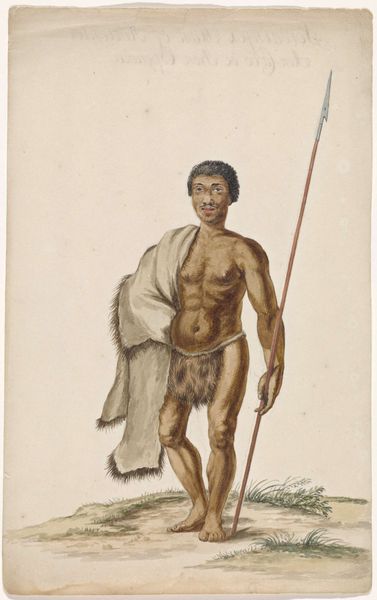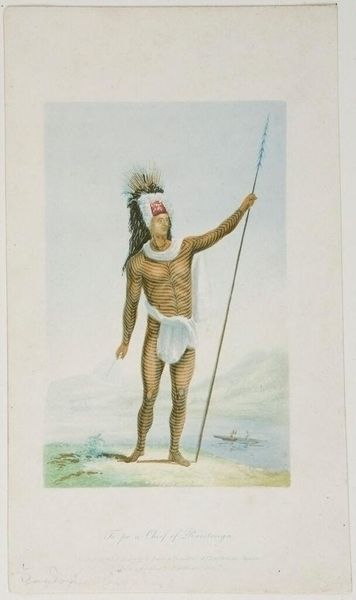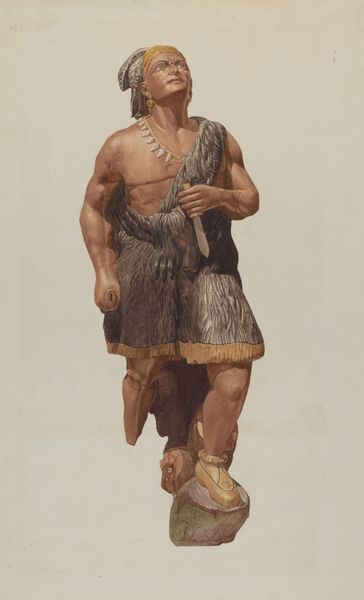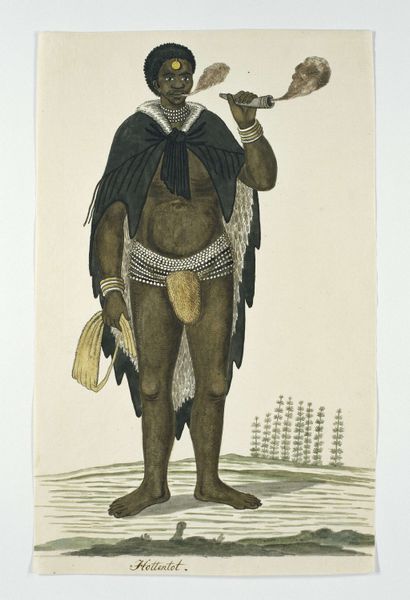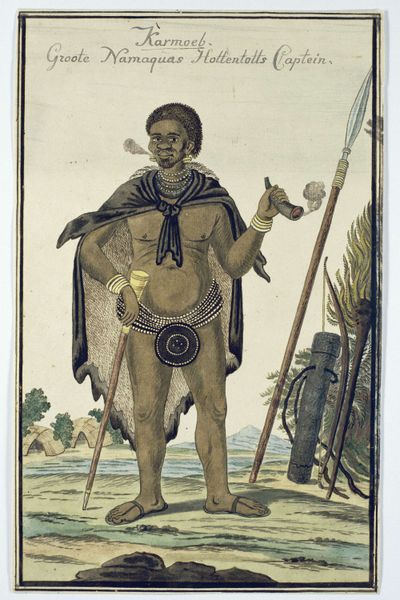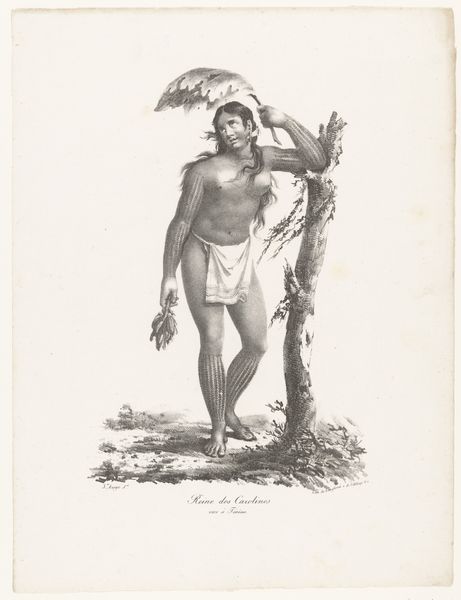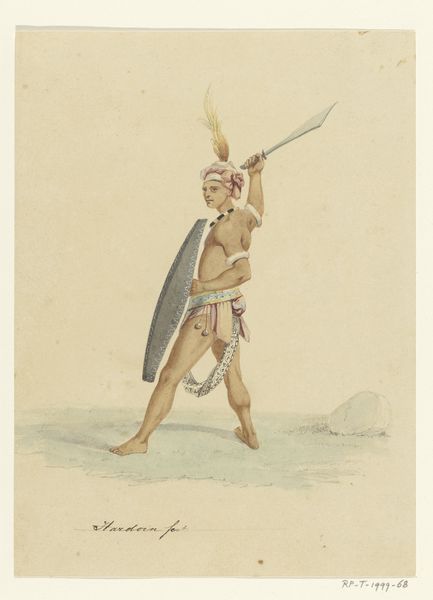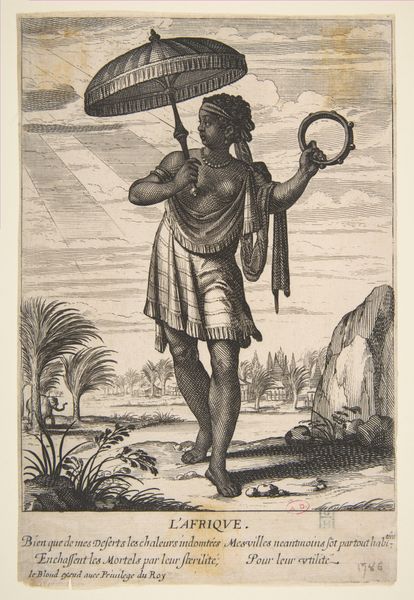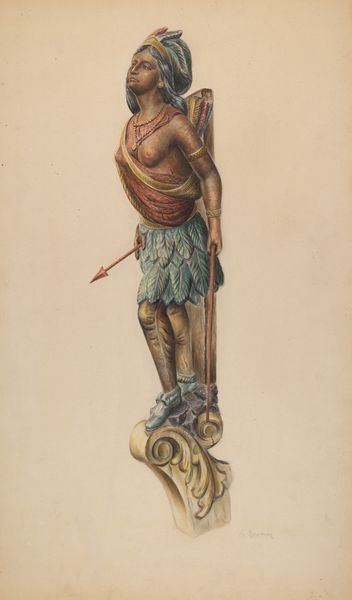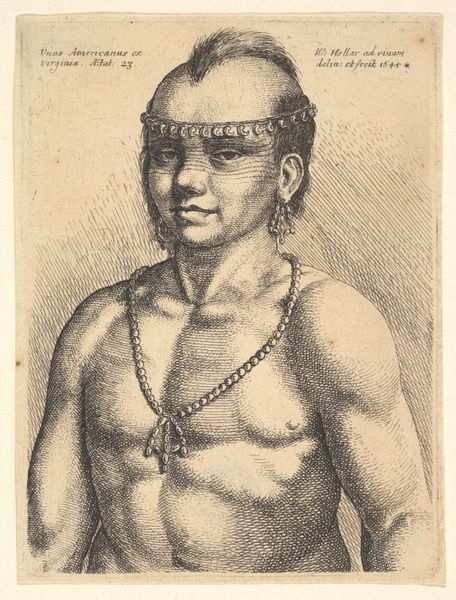
painting, watercolor
#
portrait
#
baroque
#
painting
#
caricature
#
watercolor
#
orientalism
#
surrealism
#
watercolour illustration
#
genre-painting
#
portrait art
#
watercolor
Dimensions: height 320 mm, width 200 mm
Copyright: Rijks Museum: Open Domain
Editor: Here we have an intriguing artwork titled "Chinese handwerksman met parasol en scheermes," or "Chinese Craftsman with Parasol and Razor," dating back to somewhere between 1675 and 1725, created by an anonymous artist. It's a watercolor painting. It’s quite striking, almost like a caricature, and I’m curious about its blend of orientalist and surreal elements. What do you see in this piece? Curator: The initial aspect that captivates is the curious formal arrangement of the figure within the pictorial space. Note how the parasol bisects the composition diagonally, creating two distinct zones. One zone is the figure’s body itself, almost neoclassical in its sculpted form. The other, defined by the space around the parasol, provides textural and linear contrasts, which create visual intrigue. Have you noticed the tension between precise watercolor technique in the depiction of musculature, contrasted by the quick, almost haphazard washes in the figure's lower garments? Editor: I see what you mean, especially with the tension between the precision of the torso and the looser treatment of the rest of the figure. What is that suggestive of in terms of semiotics? Curator: Formally, these artistic decisions evoke a discourse between control and spontaneity. The interplay encourages the viewer to ponder if this represents more than a simple visual recording. Note too the deliberate bareness of the upper torso with the contained composition and colour in the face; it brings your eye back there time and time again. Editor: It's fascinating how dissecting the composition reveals layers of meaning beyond the immediate image. Curator: Indeed. Close formal reading guides our experience and thought, showing how complex even seemingly simple works can be. Editor: Thank you. I feel that I can see so much more clearly now!
Comments
No comments
Be the first to comment and join the conversation on the ultimate creative platform.
